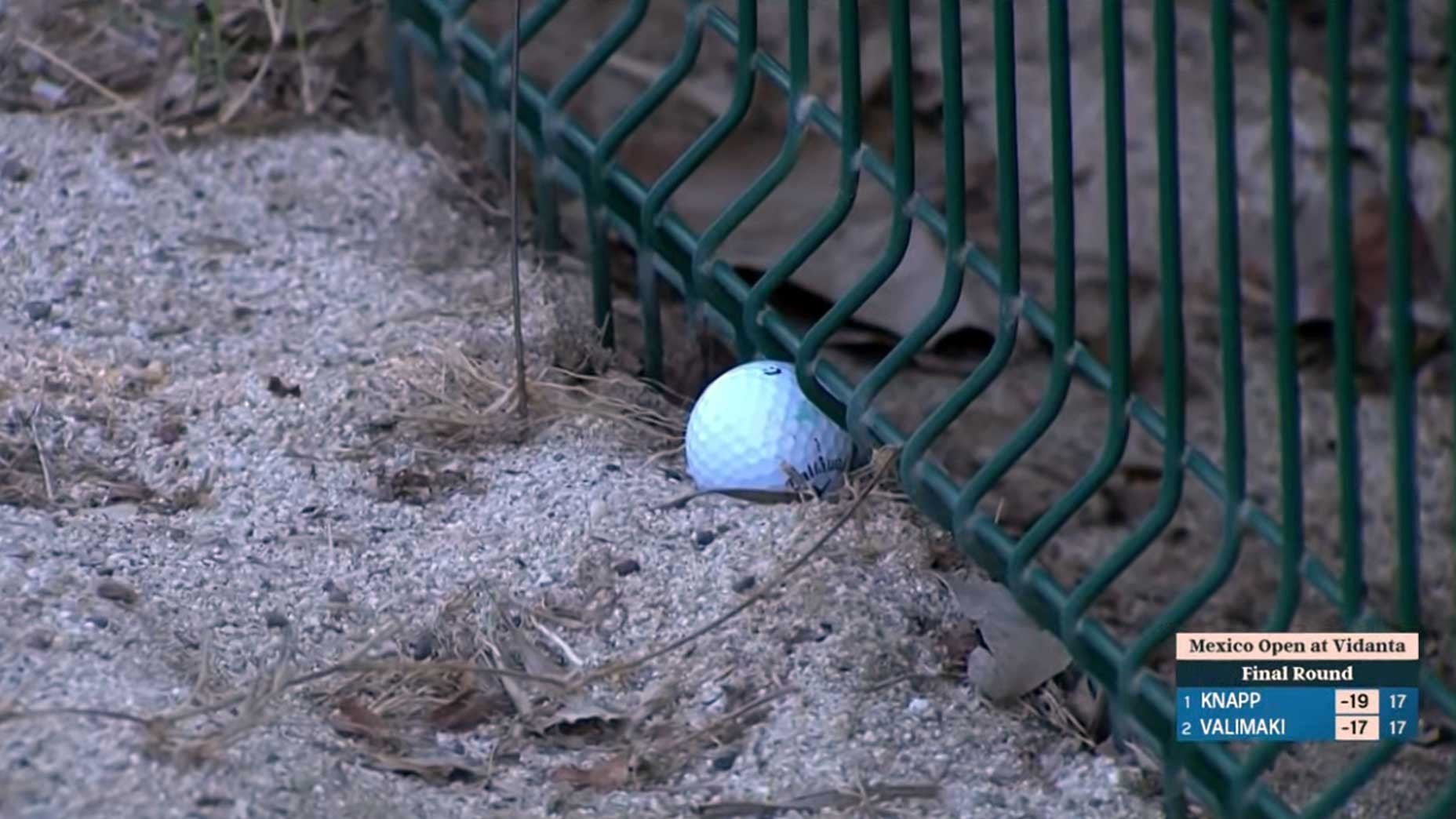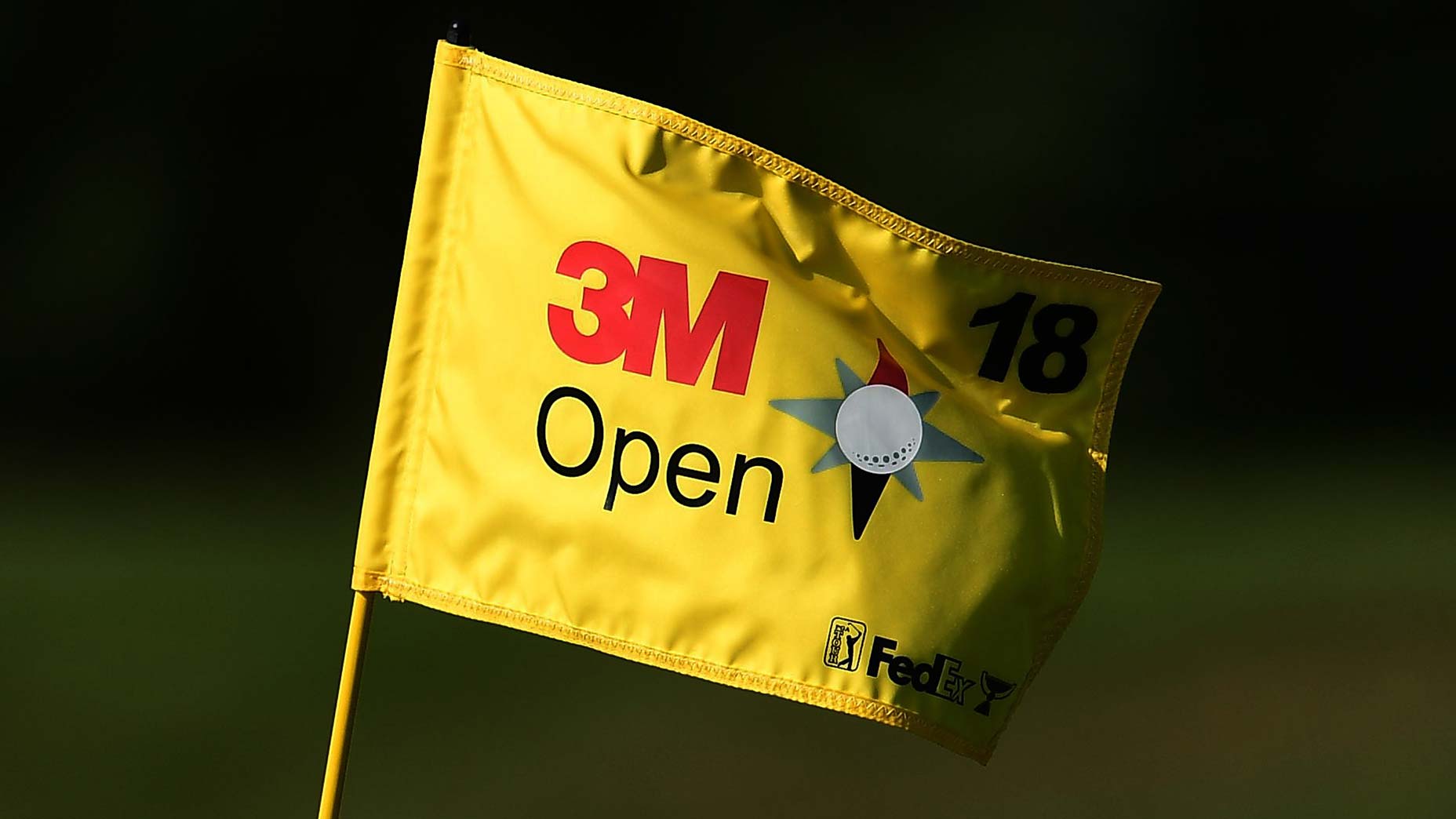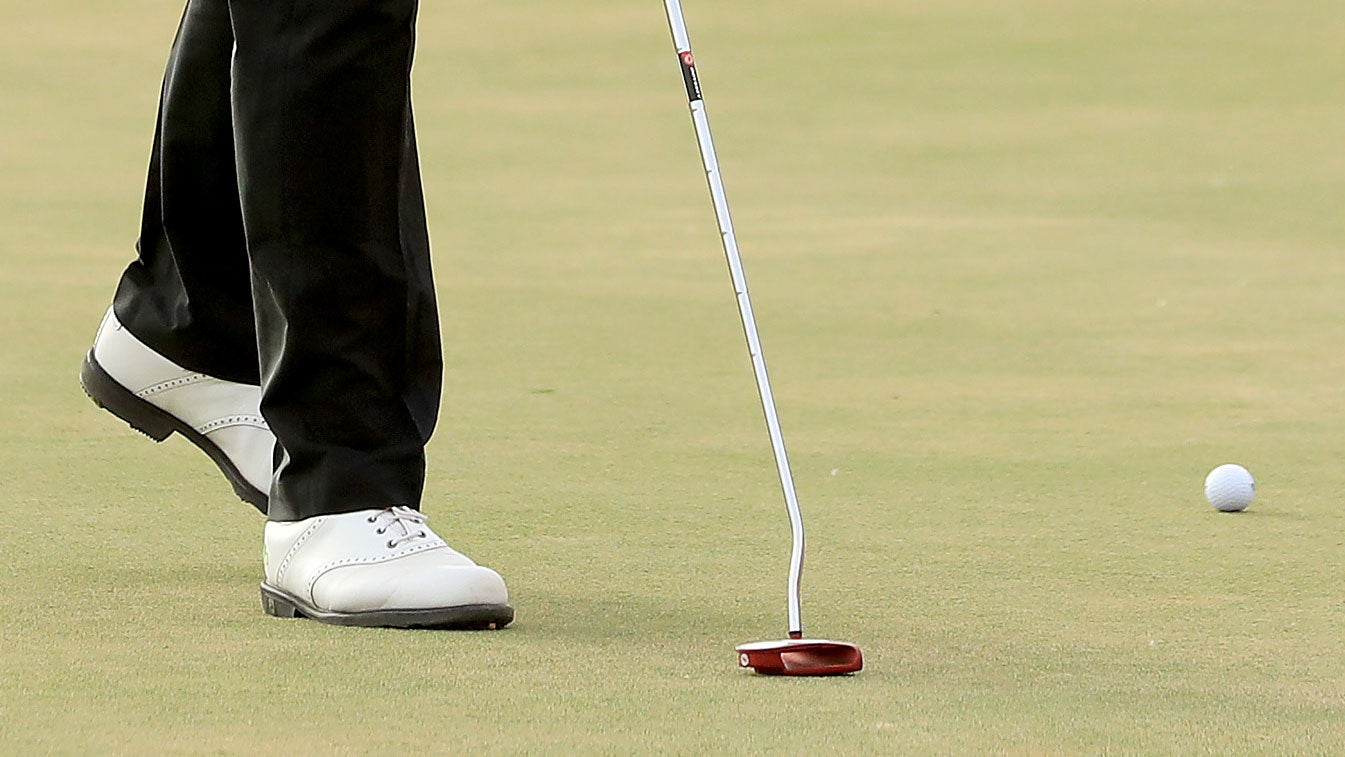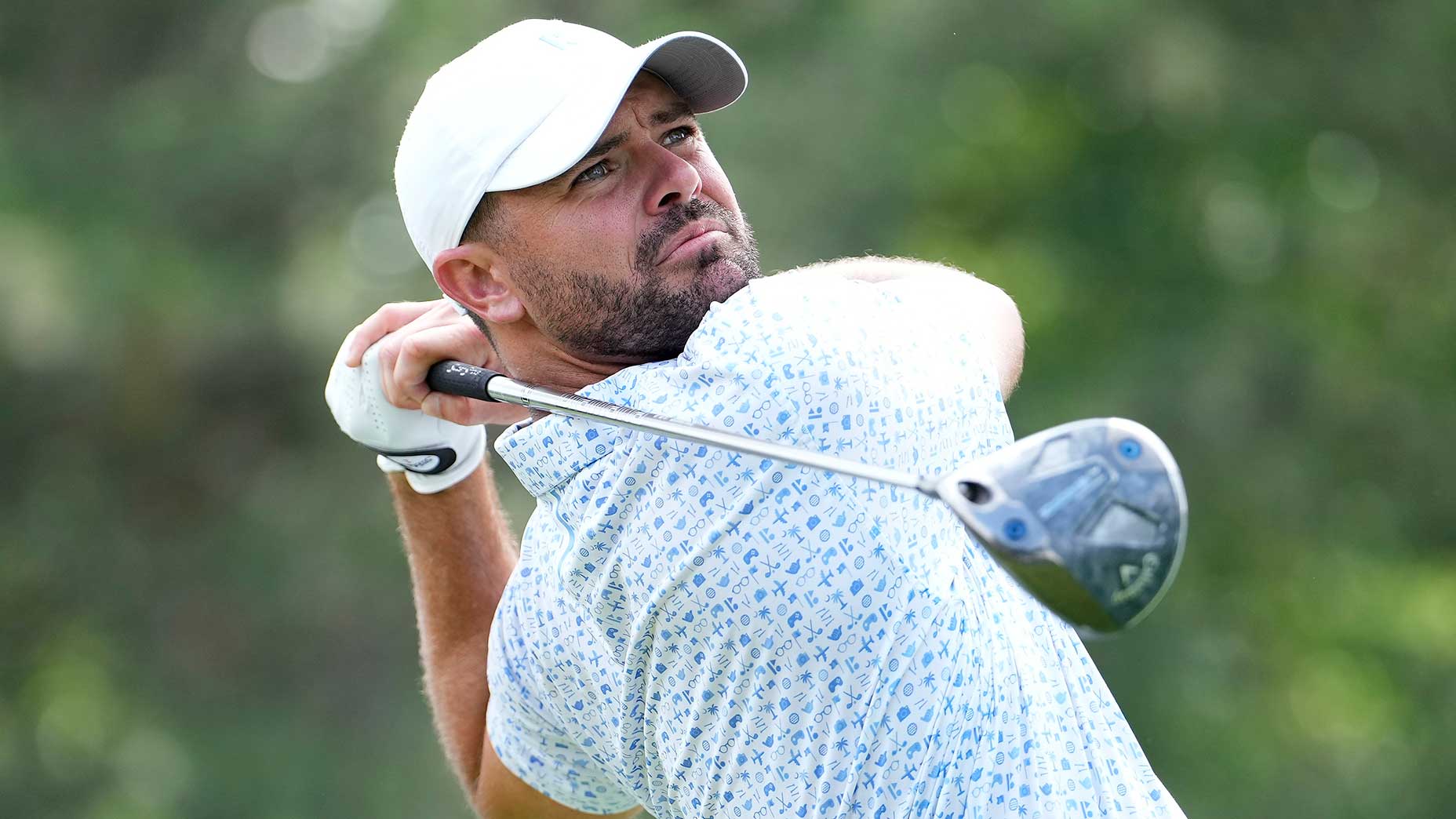Two similar shots. Two completely different rulings. Here’s why

Sami Valimaki's golf ball found its way to a precarious position on the final hole of the Mexico Open.
NBC
It was ironic to have the Mexico Open come down to a golf ball leaning up against a fence along the 18th hole at Vidanta Vallarta Sunday, if only because we saw something similar take place during the opening round.
On Thursday there was S.H. Kim, in danger of making a big score on the 18th, his ninth of the day. Kim had blown his first tee shot out of bounds right, then hit a peculiar second tee shot that ended up squarely on the out-of-bounds line. His ball rested on the in-bounds side of the green, wire fence.
How do we know this? Because Joseph LaMagna, a writer for the Fried Egg, posted video scraped from the ESPN+ feed.
Kim shows off his knowledge of the rulebook in the 39-second clip, bringing in a rules official to analyze his lie and potential to play. (And by knowledge of the book, we mean, the nuanced, tricky ways one can be bailed out by the rules. They happen in pro golf quite often.) On the left of the fence is a sandy border, then a cart path, then the grass. For the purposes of the tournament, the sandy border is one with the cart path. Together, they are considered an immoveable obstruction, or abnormal course condition.
Since Kim’s ball technically sat on what would be considered the same immovable obstruction, if he could prove that he would be able to make a reasonable play on the ball, he would be able to argue for relief from the area in the same way pros and 18-handicaps alike take free drops when their ball comes to rest on a cart path.
On paper, this seems to check out just fine, except for the fact that Kim would have to do some arguing that he could make a play at the ball. In this case, he argued that he could do so reasonably by hopping the fence and striking the ball with a swing from the other side. The rules official agreed.
In that moment, Kim was set free. The nearest point of relief from the immovable obstruction was directly to the left, across the cart path, and in the rough. A free drop back into a much better lie. When reached by GOLF.com, the PGA Tour’s Rules Committee explained it like this: “In S.H. Kim’s scenario, he could have played a sideways stroke on the other side of the fence (which is what he said he would do), therefore he was able to get free relief.”
What’s the lesson here? If you’re a pro golfer, arguing your intentions to perform even an abnormal shot can work out in your favor. Kim is allowed to play his next shot from a decent lie forward rather than having to punch out sideways, which is what he (and the official) determined was reasonable.
But Sami Valimaki clearly had a different approach.
Three days after Kim’s ruling, Valimaki found himself trailing by two on the 72nd hole of the tournament. He was desperate to make a birdie and put pressure on the leader, Jake Knapp, and did almost the same exact thing Kim did. He blew his tee shot out to the right and found his ball resting in the sand. Since he was in contention, we got a much better look at Valimaki’s lie, with his Callaway ball nestled between two tiny wire posts of the fence.
Was it accessible for Valimaki, in the same way that it was argued by Kim? It’s hard to be sure. The balls were not in exactly the same spot, even if they were similar. Valimaki also had trees much closer to a plausible swing he would have made within the out-of-bounds area.
“There’s no way to hit this ball, absolutely no way,” walking reporter John Wood said on the NBC broadcast.
Valimaki seemed to agree. There was no thought to hop the fence and analyze an escape plan. Perhaps he knew the Rules of Golf as well as anyone. Perhaps he was just focused on other things. His main question for the rules official was about his standing in the tournament. Taking a drop with a penalty would have brought him closer to tying for 2nd, rather than finishing 2nd outright. The difference there is massive for a pro contending for the first time on the PGA Tour.
In this case, there’s an exception to the rule that Kim used. If it is unreasonable to play from the position the ball has come to rest in, the player is not granted free relief, even if it rests on an abnormal course condition. That’s what the rules committee said after the tournament was complete:
“In Sami’s case it was clearly unreasonable for him to play a stroke. The exception to Rule 16.1 applies.”
Some viewers see the two situations and believe them to be identical. Others will view them as distant cousins. Thus is the nature of the Rules of Golf, which have plenty of grey area that is open to interpretation. Apropos of nothing, Kim sent his next shot out of bounds, en route to a triple-bogey 8, while Valimaki took his penalty drop in a similar area and scrambled for a par to close out the best finish of his PGA Tour career.










